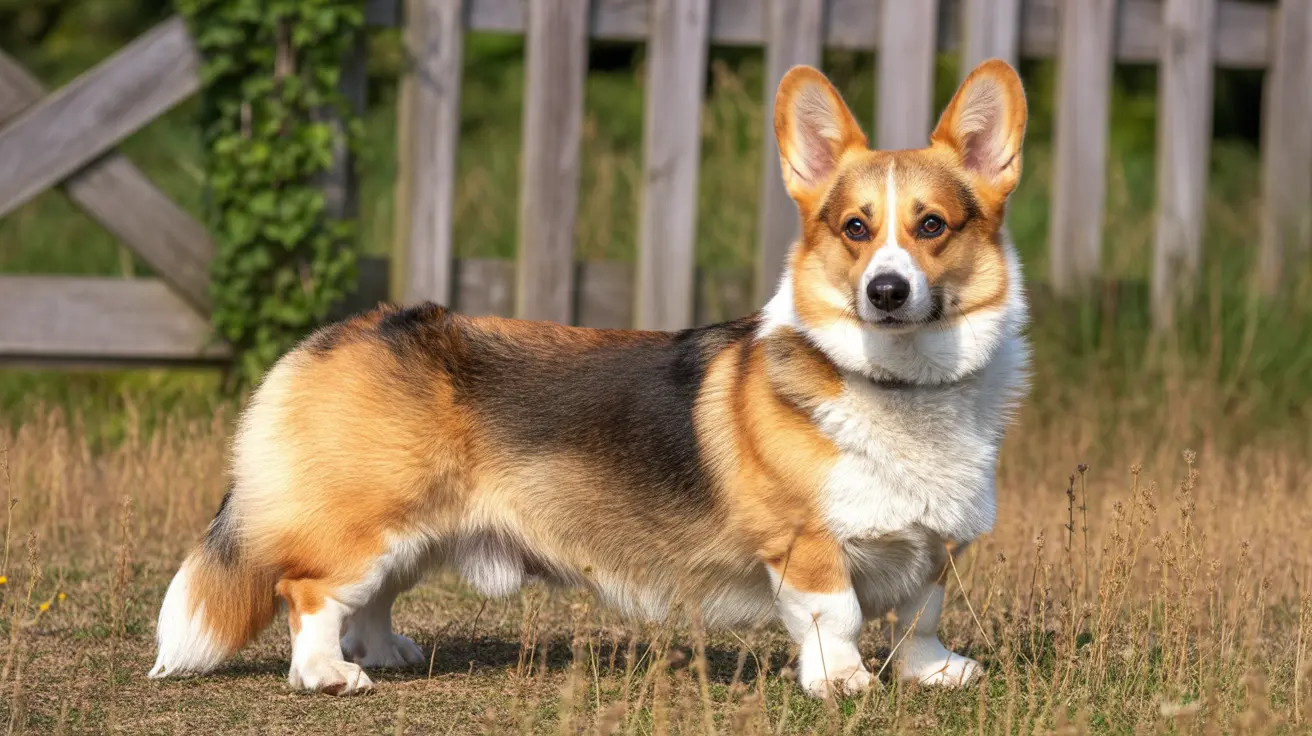The Two Main Types of Corgis
Pembroke Welsh Corgi
The Pembroke Welsh Corgi is perhaps the more widely recognized of the two breeds, thanks in large part to Queen Elizabeth II's famous affection for them. These dogs typically feature:
- Shorter, more fox-like faces
- Generally lighter build (25-30 pounds)
- Usually docked or naturally bobbed tails
- More limited color range
Pembrokes come in several standard colors, including red, sable, fawn, and black and tan, typically with white markings. Their coats are straight and medium-length, with a weather-resistant double layer that requires regular grooming.
Cardigan Welsh Corgi
The Cardigan Welsh Corgi is slightly larger and more diverse in its appearance than its Pembroke cousin. Distinguished features include:
- Longer, fuller tail
- Heavier build (up to 38 pounds)
- Broader chest
- More varied color options
Cardigans showcase a wider range of colors, including red, sable, brindle, black, and blue merle. They're the only Corgi breed that can properly display the merle pattern, making this a key identifying feature.
Physical Characteristics and Differences
While both types of Corgis share some common traits like short legs, long bodies, and upright ears, several physical characteristics set them apart:
Size and Structure
- Both stand 10-12 inches tall
- Cardigans are typically heavier and more substantial
- Pembroke ears tend to be pointier
- Cardigan feet are typically larger and more rounded
Coat and Colors
- Both have double coats requiring regular maintenance
- Cardigans have more accepted color variations
- Pembrokes typically show more limited color patterns
- White markings are common in both breeds
Temperament and Personality
Despite their physical differences, both types of Corgis share many personality traits that make them excellent companions:
- Intelligent and easily trainable
- Active and energetic
- Loyal to their families
- Natural herding instincts
- Good with children when properly socialized
Care Requirements
Both Corgi breeds have similar care needs, including:
- Regular exercise to prevent obesity
- Consistent grooming to manage shedding
- Mental stimulation through training and activities
- Regular veterinary check-ups
- Proper diet management to maintain healthy weight
Frequently Asked Questions
What are the main differences between Pembroke Welsh Corgis and Cardigan Welsh Corgis?
The main differences include tail length (Cardigans have long tails while Pembrokes usually have short or docked tails), size (Cardigans are typically heavier), and color variations (Cardigans have more color options, including merle patterns).
How can I tell a Cardigan Welsh Corgi from a Pembroke Welsh Corgi by their coat colors and patterns?
Cardigans come in more colors, including blue merle and brindle, which are never found in purebred Pembrokes. Pembroke colors are limited to red, sable, fawn, and black and tan with white markings.
Why do Pembroke Welsh Corgis often have docked tails, while Cardigans have full tails?
This difference stems from historical practices and breed standards. Pembrokes were traditionally tail-docked for working purposes and breed standards, while Cardigans have always kept their natural long tails.
What are the accepted coat colors and markings for Pembroke and Cardigan Welsh Corgis?
Pembrokes are accepted in red, sable, fawn, and black and tan with white markings. Cardigans can be red, sable, brindle, black, blue merle, and various tricolor combinations with white markings.
Does coat color affect the temperament or health of Pembroke and Cardigan Welsh Corgis?
Coat color does not affect temperament in either breed. However, in Cardigans, the merle gene requires careful breeding practices, as merle-to-merle breeding can lead to health issues in puppies.






